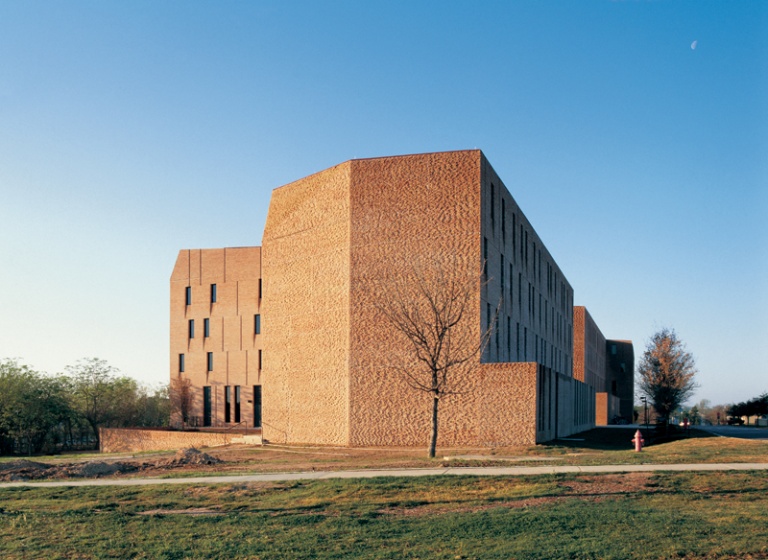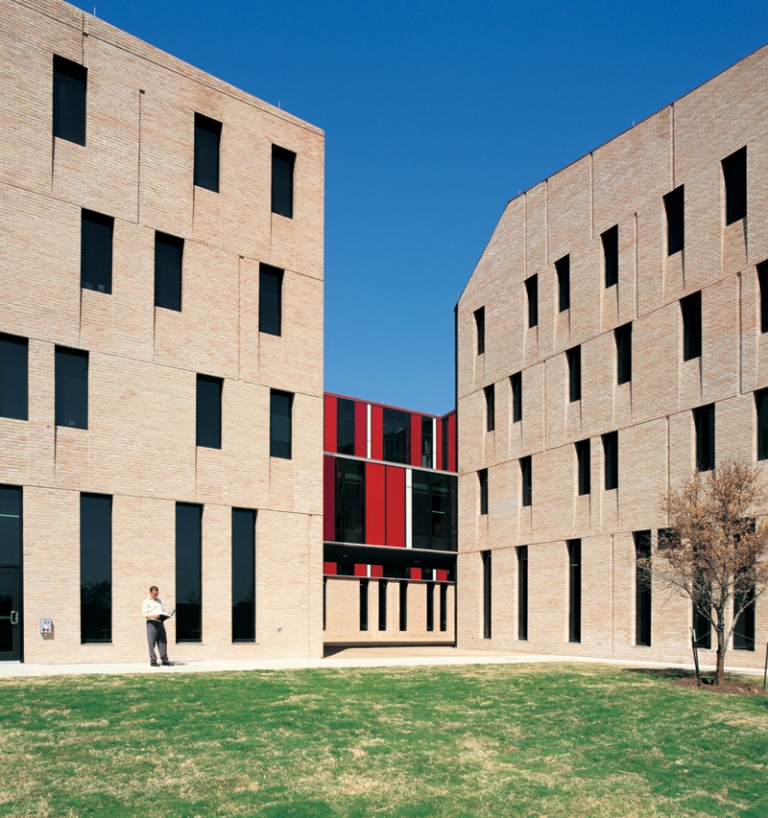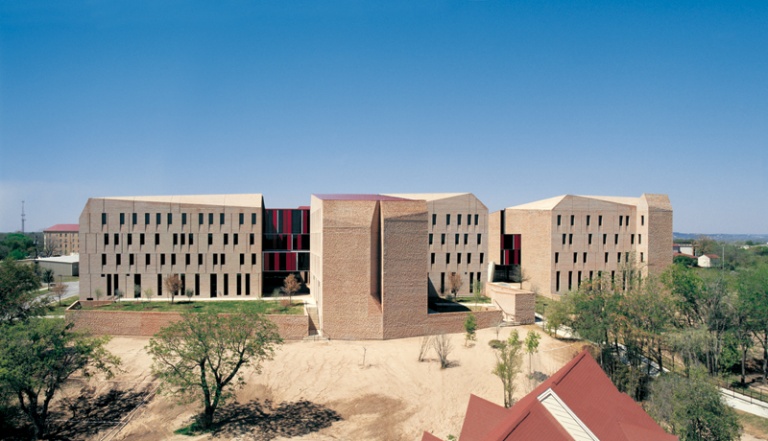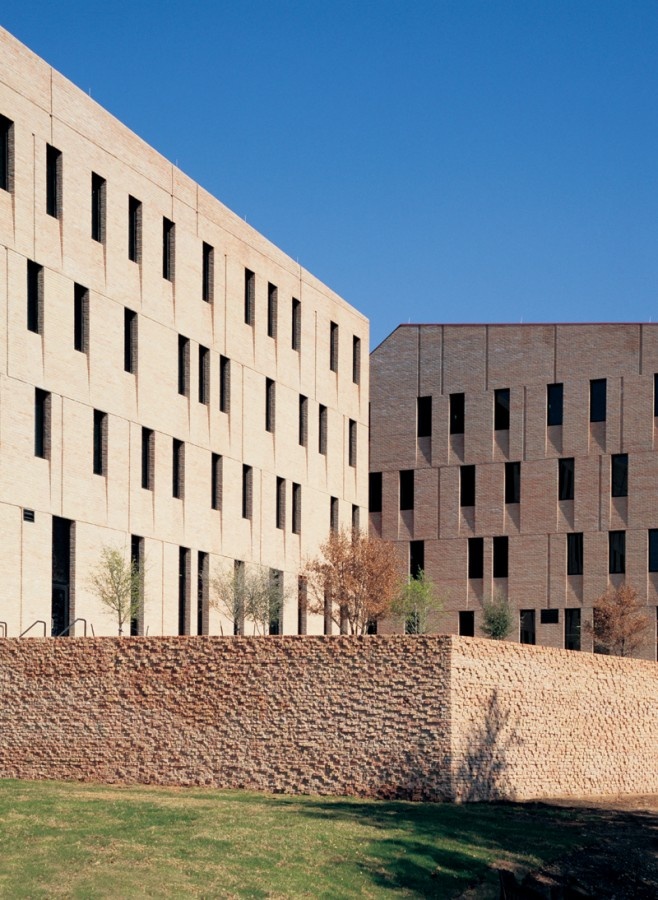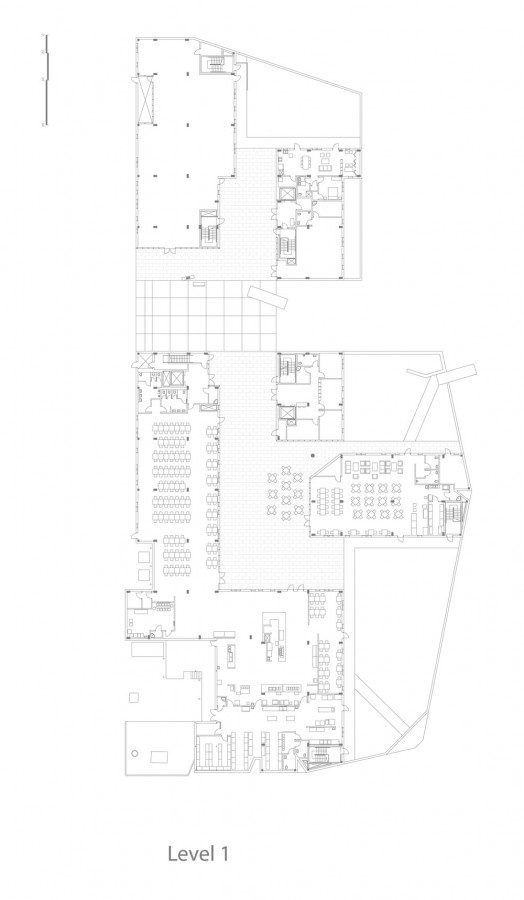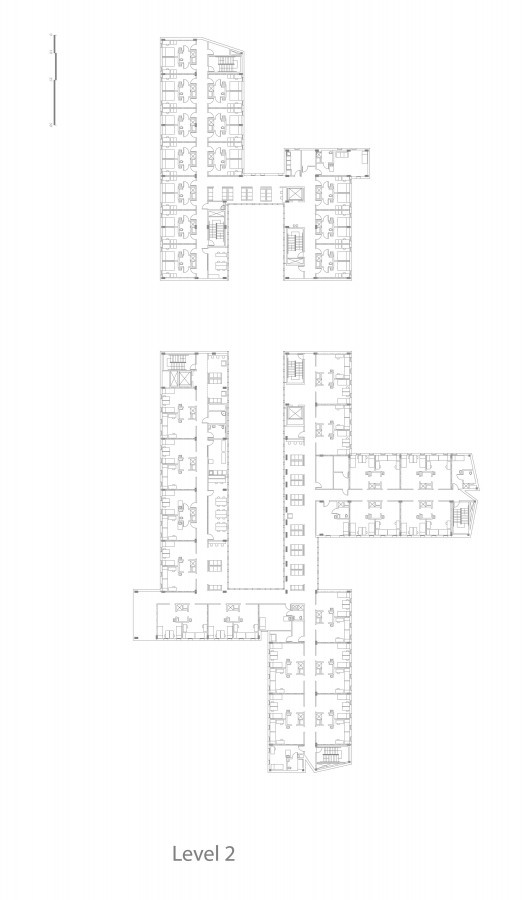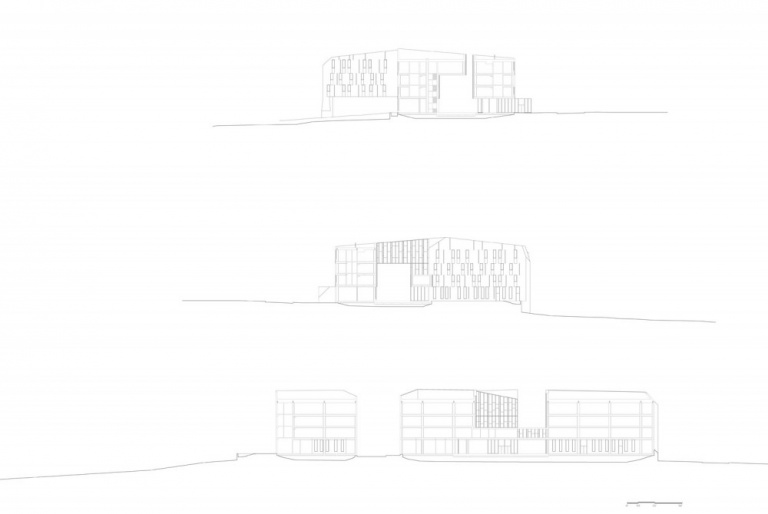St Edwards University New Residence and Dining Hall
Alejandro Aravena
There were 2 debates running in parallel in this project. One more explicit, declared in various documents and that were the actual programmatic requirements to be addressed. The other one, that even though was named in some documents as compliance with Master Plan was far less explicit and came out mainly in the meetings: it was the question of the language and appearance of the building and its relation to the old buildings of the campus.
The formal assignment was to provide the new dormitories (300 beds), dining facilities and various students' services for St. Edward's University in Austin Texas.
We thought that a dorm is like a monastery: it's about how to organize a collections of repetitive small cells and how to relate them with larger special pieces. In the case of the monastery it's about the monks' cells and how the relate them with the refectory and chapel. Here it was about the rooms and the dining hall and common facilities. Both of them have to do with old atavist situations: sleeping, studying and eating. Or to put it in a more suggestive way: feeding the body and the soul and digesting.
There are two great examples of how to answer paradigmatically to this problem:
The first one in the late 40`s, when Alvar Aalto designed the Baker House for MIT in Cambridge, where he created a meandering form with the repetitive units to see as a foreshortened figure the Charles river and in one of the inlets of the rooms' strip he accommodated the special piece. In a way his operation can be described as having a strip and a volume and with them create a place. (1+1=3)
The second one in the 60's, when Louis Kahn designed the Erdman Hall, where he used the cells to enclose and define a core that worked as the special piece. Instead of adding pieces, he synthesized cells and special volume into a single operation; he actually repeated the operation 3 times. [(1+1=1) x3 = 1]
We wanted to participate of this historical sequence and made our statement not in plan though but in section: we used the special pieces as the plinth for the rooms, giving a public base for the more private units on top.
We also created an articulated footprint, but instead of making it as a reaction to a geographic event, we did it to increase the perimeter of the building so that every single room could have a view and natural light without having to compromise their intimacy. And we also wrapped the strip around a void but instead of doing it to conform the special pieces, we made it in order to introduce and intermediate outdoor space adding one topological dimension to a campus that only had solids displayed on a field. Actually we placed all the common rooms of the dorm's program facing this Cartesian canyon, so that the entire project can be seen as an order of degrees, from public, to intermediate, to common, to private.
But there was also an underlying task. It had to do with the debate of how to determine the appropriate architectural language of the building in order to relate to the rest of the campus, particularly the old buildings.
This discussion took place mainly with and within the Board of Trustees, where none of them was an architect. I say this not to disqualify those other speakers, but to clarify that the discussion was held in a transversal and common (in the sense of shared and normal) way. It was not a disciplinary discussion of how to deal with history that could have happened among architects, debate that would have been mainly ideological and based on abstract principles. This one took place among citizens, so it became very concrete. Not better, nor worse; concrete.
http://www.alejandroaravena.com/PDF/StEdwards.pdf







